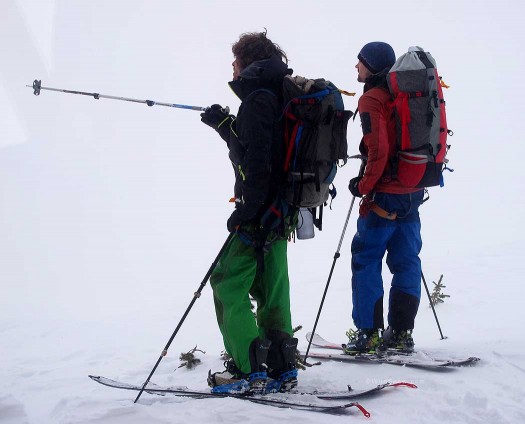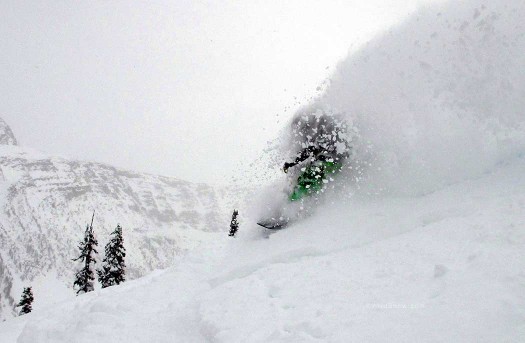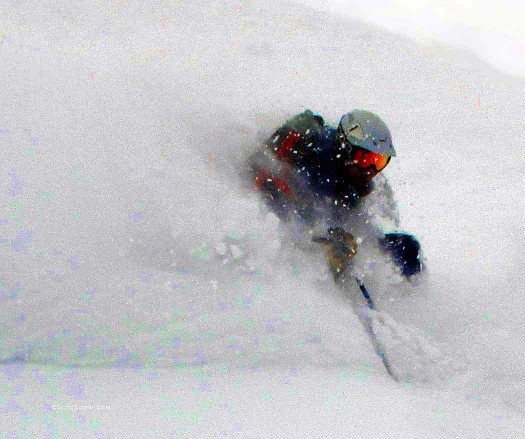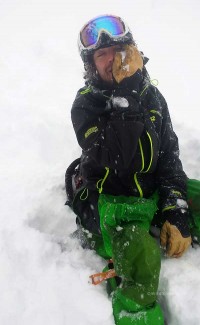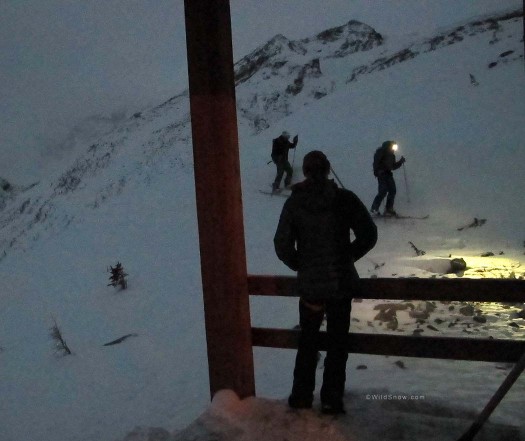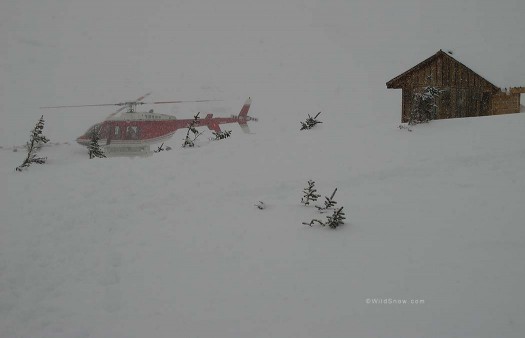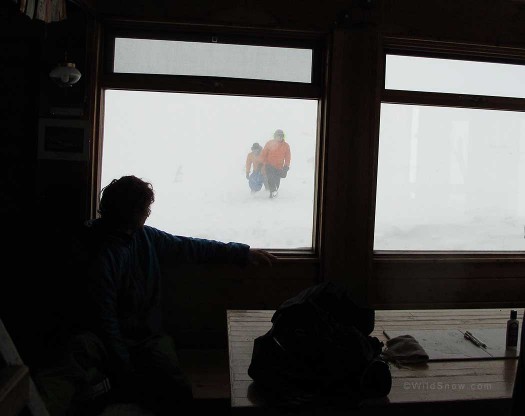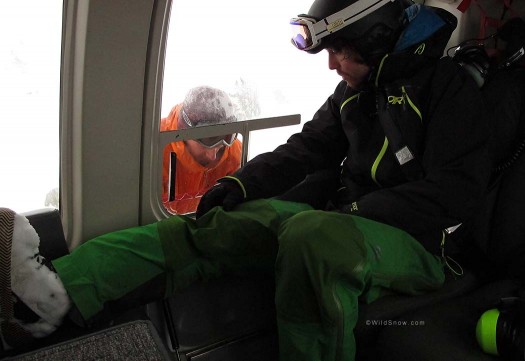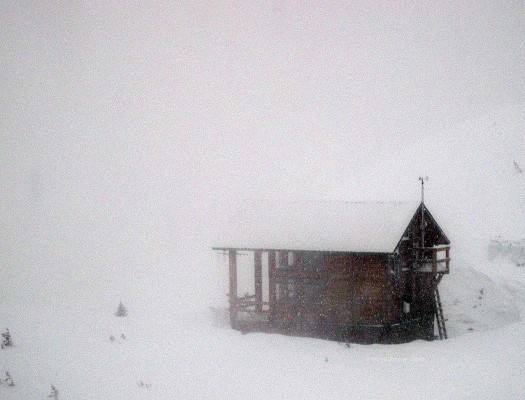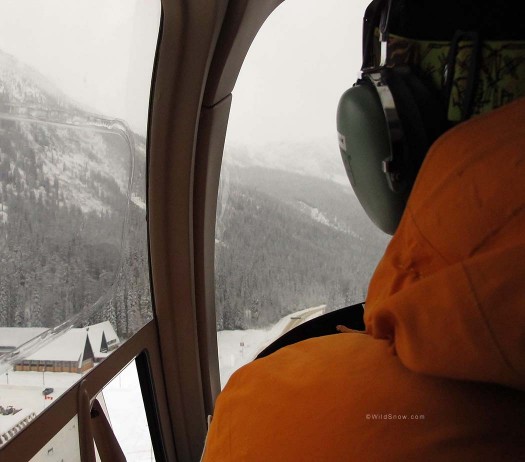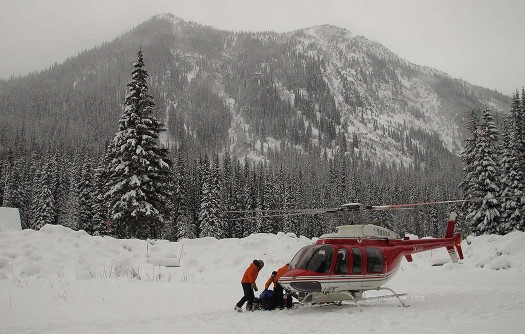Our time at the Asulkan Cabin was on a steady trend of improving snow conditions and quality skiing below timberline. On day four, with over 30 cm of fresh snow outside the cabin we were excited to get into long awaited early season powder turns.
After several laps on west facing shots we were eager to get the most out of the short December days (sunset at 3:45 pm!). Louie and I headed down for another run through the trees. I took a line between two previous laps that funneled out into a shallow gully.
Alas, with too much ambition and speed, my line ended with a 20 foot cliff that dropped away to the flat bottom of the gully. Before I knew it I was soaring off the feature and landing with crumbling force that brought my knees to full compression and my face to my right knee. Having injured myself the same way a few years ago, I was immediately concerned.With the waning light, Louie and I had a few critical decisions to make. We decided it would be best to try and make our way back to the cabin for the night, rest and reassess my injuries the next morning. I was hurting, but still in the golden hour before swelling and pain could make it impossible to cover any distance on foot. It was get to the hut NOW — or set up a snow bivvy and subsequent rescue in difficult terrain. We splinted my knee with a foam back pad out of a backpack, and I limped behind Louie as he stomped out the trail as best he could for my splitboard skis.
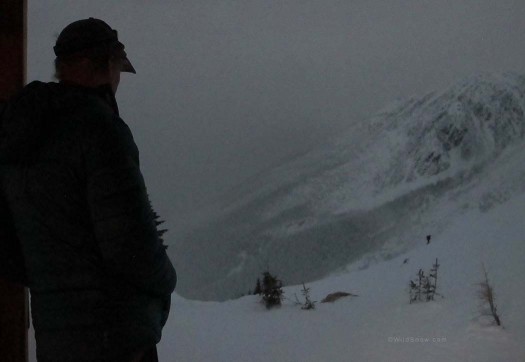
Lou spots Louie and Coop on the ridge below the cabin. The sighs of relief were audible. Fortunately we all had FRS radios and put them to full use during these events.
Once back at the cabin, about an hour after the initial impact, we had the opportunity to complete a more indepth assessment of how much I’d messed myself up. Ultimately all I could do was rest, ice, elevate and ingest ibuprofen. We’d wait until morning to see how bad the swelling (or worse) would be and if it would be possible to ride out on foot.
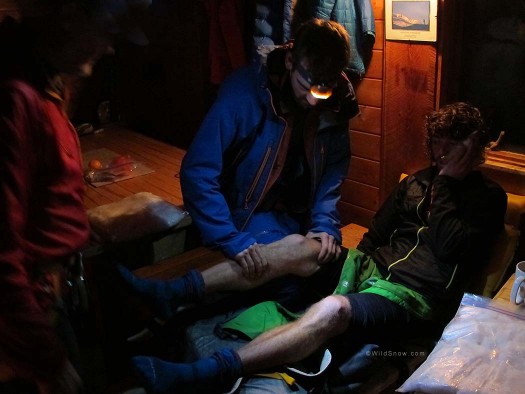
Evaluating the damage. Doctor alert, are we doing Lachman correctly? We googled it from the hut on a smartphone.
We woke up before dawn Monday morning to reassess the injury. There was a significant increase in pain with weight bearing, and the swelling had increased exponentially throughout the night. Walking out the Asulkan was not an option — especially considering the loaded up Mousetrap avalanche hazard area I’d be struggling through for hours instead of minutes. We made contact with Parks Canada, and began organizing an evacuation. The dispatcher decided that a heli-evac was going to be the best and quickest option.
Team Dawson continued to organize logistics and stomped out a landing zone and a path to the cabin. With visibility continuing to move in and out around the cabin, we remained in frequent communication with the evacuation personnel. Lou mentioned with a chuckle that here we were with satphones, 2-way radios and whatnot, and we were simply doing everything via cell phone.
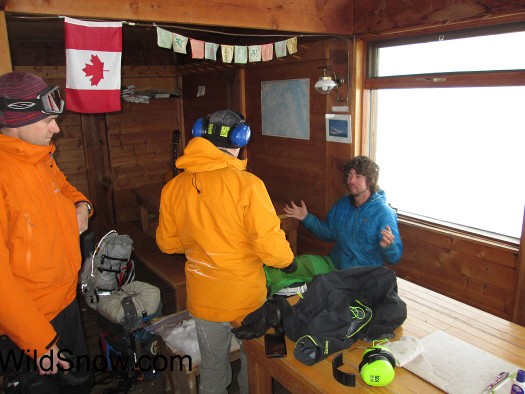
SAR guys Andrew and Chris assess. When they arrived wearing Dynafit Vulcans Lou knew they were men with their act together.
After loading up and waiting for another clearing in the visibility we were back at the Rogers Pass Visitors Center within ten minutes. I was incredibly impressed with the organization and smoothness of the whole operation by the Parks Canada personnel. They are true professionals in their trade. A big thanks to them for how they take time out of their day (and subject themselves to personal risk) to help others in need.
For now, I am back in Bellingham and heading to the doctor to see what the long term diagnosis is. Hopeful for more turns this season. Whatever the case, as Lou mentioned, the whole situation could have been way, way worse so we’re all grateful of the outcome.

Jonathan Cooper (“Coop”) grew up in the Pacific Northwest and has been playing in the mountains since he was a teen. This was about the same time he made the fateful decision to strap a snowboard to his feet, which has led to a lifelong pursuit of powdery turns. Professionally speaking, he has been working as a ski guide, avalanche educator, and in emergency medicine for over a decade. During the winter months he can be found chasing snow, and passing on his passion for education and the backcountry through teaching avalanche courses for numerous providers in southwest Colorado, and the Pacific Northwest. Similarly, his passion for wilderness medicine has led him to teach for Desert Mountain Medicine all over the West. If you’re interested, you can find a course through Mountain Trip and Mountain West Rescue. In the end, all of this experience has merely been training for his contributions to the almighty WildSnow.com.

